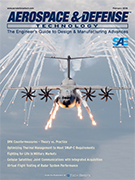Magazine

Aerospace & Defense Technology: Feb 2016
2016-02-01
Clamoring for more entertainment Connected consumers drive demand for bandwidth, though seatback entertainment remains popular. Fighting for life in military markets Airbus Defense & Space is looking to revitalize and ramp up production rates of its military aircraft portfolio.







